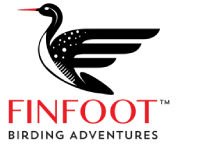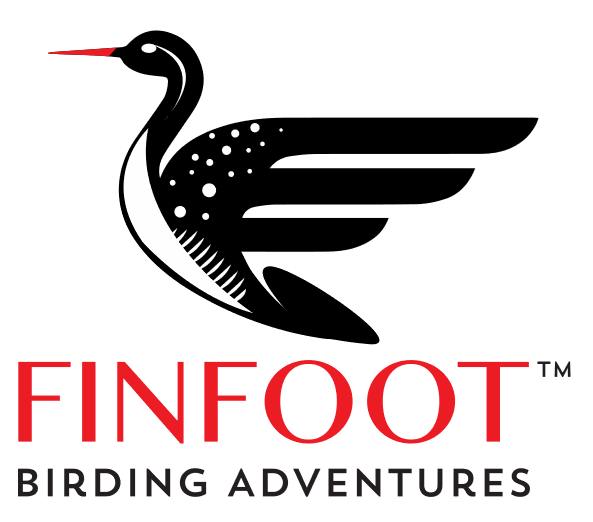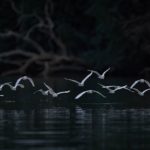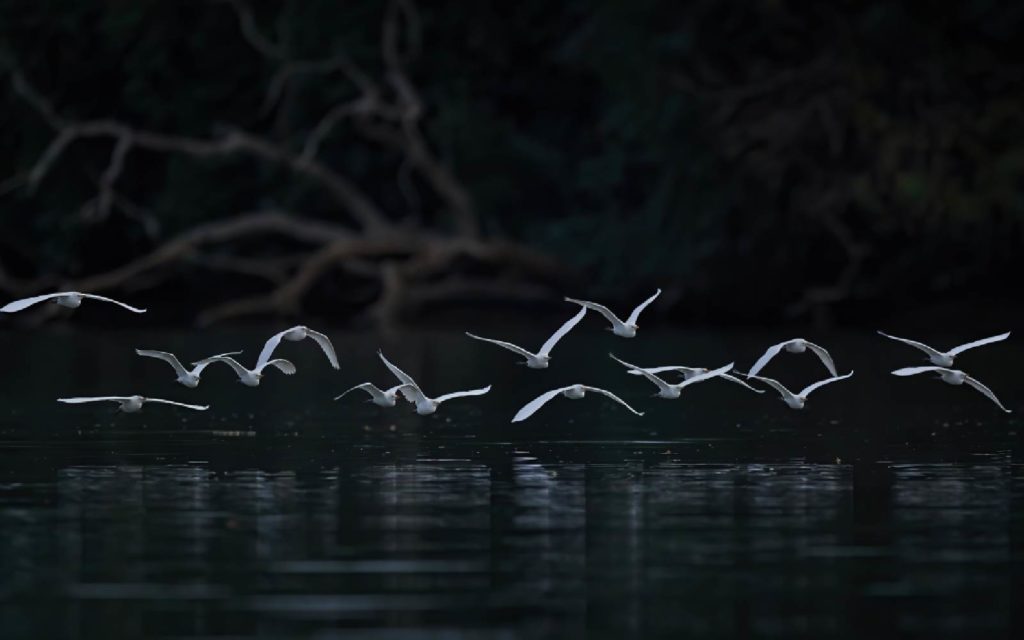THE GAMBIA
A BRIEF INTRODUCTION TO THE GAMBIA FOR THE BIRD WATCHERS
Background
The Gambia provides some amazing opportunities for birdwatching along with photography. The Gambia is a small country being roughly 200 miles long and 30 miles wide and offers 600+ species with everything in relatively close proximity.
The birding is generally easy with some great localized birds including Egyptian Plover, White-backed Night-heron, and Abyssinian and Blue-bellied Rollers.
Also, more widespread African species such as African Fish-eagle, Black and Goliath Herons, Red-throated and Swallow-tailed Bee-eaters, and Yellow-crowned Gonolek. Although there are few wild animals are native to the region there’s Nile Crocodile, Hippopotamus, Guinea Baboon and Red Colobus Monkeys. Regrettably, those that survive are under pressure from the human and domestic animal populations.
Gambia or The Gambia?
The country is referred to in different ways and you may wonder which is correct and why? The Gambia was first explored by the Portuguese and named after The River Gambia.
When the British arrived in the country, they also took this name on. However, in 1963, one year before The Gambia became independent from Britain, the Prime Minister wrote to the commission to ask if The Gambia could continue to be used, as Zambia was becoming independent at the same time. By adding ‘The’ it was thought there would be less confusion, as they sound similar.
Climate
The Gambia experiences a sub-tropical climate. Sunshine prevails throughout the year and average temperatures range from 23°C to 34°C. There are two seasons; a long, dry season (November to May) and a short, wet season (June to October), with peak rainfall during August and September. Bathing is very inviting with an average water temperature of 24°C.
Landscape and Habitat
The landscape of The Gambia comprises five main habitat types:
Coast and inshore waters
Lower River wetlands
Central and Upper River wetlands
Savanna and ‘upland’ arable
Lowland and riverine forest
The predominant feature of the land is Guinea woodland savannah and Sahelian scrub. Around the estuary, along the banks and tributaries of the River Gambia are mangroves.
Before independence, The Gambia was fortunate to be endowed with dense forests. However, since the early 1950’s, due to an increasing population, the unsustainable extraction of wood and non-wood products, an increase in agricultural activities and frequent incidences of fire only very small pockets of primary Atlantic forest remain.
Even these have undergone changes in the form secondary succession. This has resulted in lesser dense forests, poor regeneration potential, lower growth, undesirable grass occupation and lower plant species diversity.
Culture, Language and Religion
Most Gambian’s are bilingual to say the least with various tribal languages being used to converse between each other. Most, if not all are educated in English. The Gambia is very friendly and hospitable. Life is taken at an incredibly relaxed pace. It is essential to accept this.
It is common to receive an invitation to a Gambian ‘compound’, a family community. This gives a really good insight into the local way of life. If you decide to accept an invitation, it is polite to take a small gift, a bag of rice or bars of soap for laundry for example.
Within the region, there are many local tribes. The main ones being Mandinka, Wolof, Fula and Jola, each having its own language and traditions.
Religion in West Africa is very varied but centred around an idea of animism. Simply put, animism is a worldview which states that all beings, humans, animals, plants, lands, and waters, live within an interconnected web of spirituality.
Costs
Sitting outside of the Eurozone, The Gambia is unaffected by movements of sterling against the Euro. The Dalasi exchange rate is currently around D76/£1 (correct as of July 2023). Value for money is excellent in resort areas when eating out or purchasing local handicrafts.
Food and Traditional Gambian Dishes
There are four main traditional Gambian dishes which can be made with fish, meat or chicken:
- Benachin – Rice cooked with meat or fish and vegetables and tomatoes.
- Domoda – Meat stewed in peanut puree and served with rice.
- Superkanja – A mix of okra, fish or meat, palm oil, onions and pepper boiled together.
- Chicken Yassa – Chicken cooked with fresh lime, onions and ground black pepper.
The Gambia is renowned for its abundant supply of fresh seafood. Lady Fish, Barracuda, Butter Fish and Atlantic Prawns are very available and popular.
The beach bars will offer ‘catch of the day’ which will come from one of the local fishing villages.



